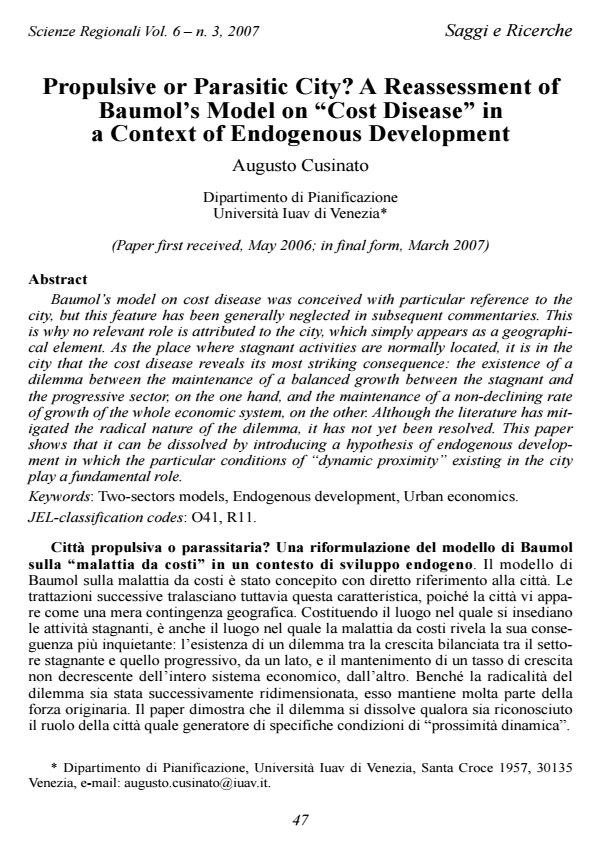Propulsive or Parasitic City? A Reassessment of Baumol’s Model on "Cost Disease" in a Context of Endogenous Development
Journal title SCIENZE REGIONALI
Author/s Augusto Cusinato
Publishing Year 2007 Issue 2007/3
Language Italian Pages 22 P. 47-68 File size 122 KB
DOI
DOI is like a bar code for intellectual property: to have more infomation
click here
Below, you can see the article first page
If you want to buy this article in PDF format, you can do it, following the instructions to buy download credits

FrancoAngeli is member of Publishers International Linking Association, Inc (PILA), a not-for-profit association which run the CrossRef service enabling links to and from online scholarly content.
Dipartimento di Pianificazione Università Iuav di Venezia* (Paper first received, May 2006; in final form, March 2007)Abstract Baumol’s model on cost disease was conceived with particular reference to the city, but this feature has been generally neglected in subsequent commentaries. This is why no relevant role is attributed to the city, which simply appears as a geographical element. As the place where stagnant activities are normally located, it is in the city that the cost disease reveals its most striking consequence: the existence of a dilemma between the maintenance of a balanced growth between the stagnant and the progressive sector, on the one hand, and the maintenance of a non-declining rate of growth of the whole economic system, on the other. Although the literature has mitigated the radical nature of the dilemma, it has not yet been resolved. This paper shows that it can be dissolved by introducing a hypothesis of endogenous development in which the particular conditions of dynamic proximity existing in the city play a fundamental role.
Augusto Cusinato, Propulsive or Parasitic City? A Reassessment of Baumol’s Model on "Cost Disease" in a Context of Endogenous Development in "SCIENZE REGIONALI " 3/2007, pp 47-68, DOI: